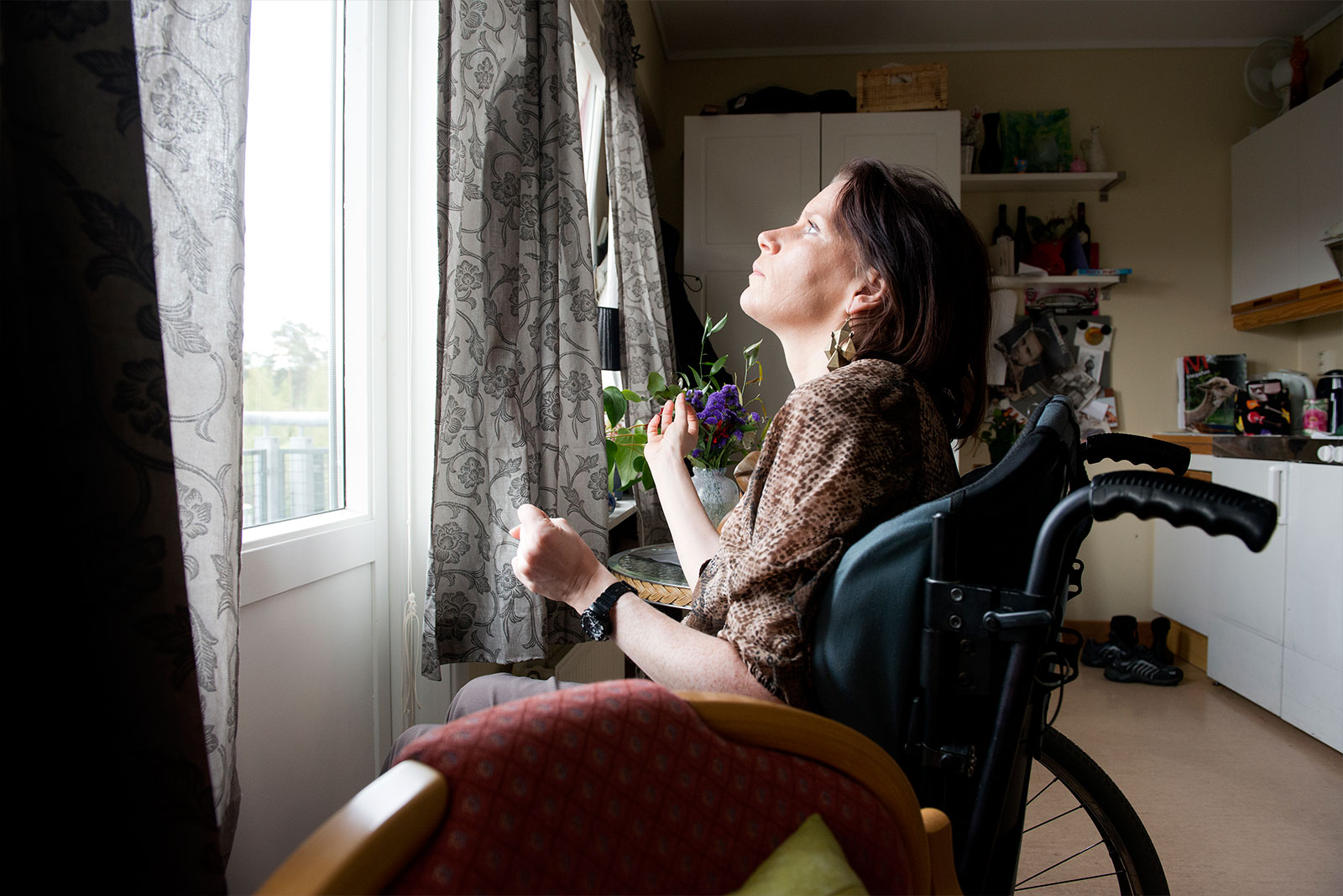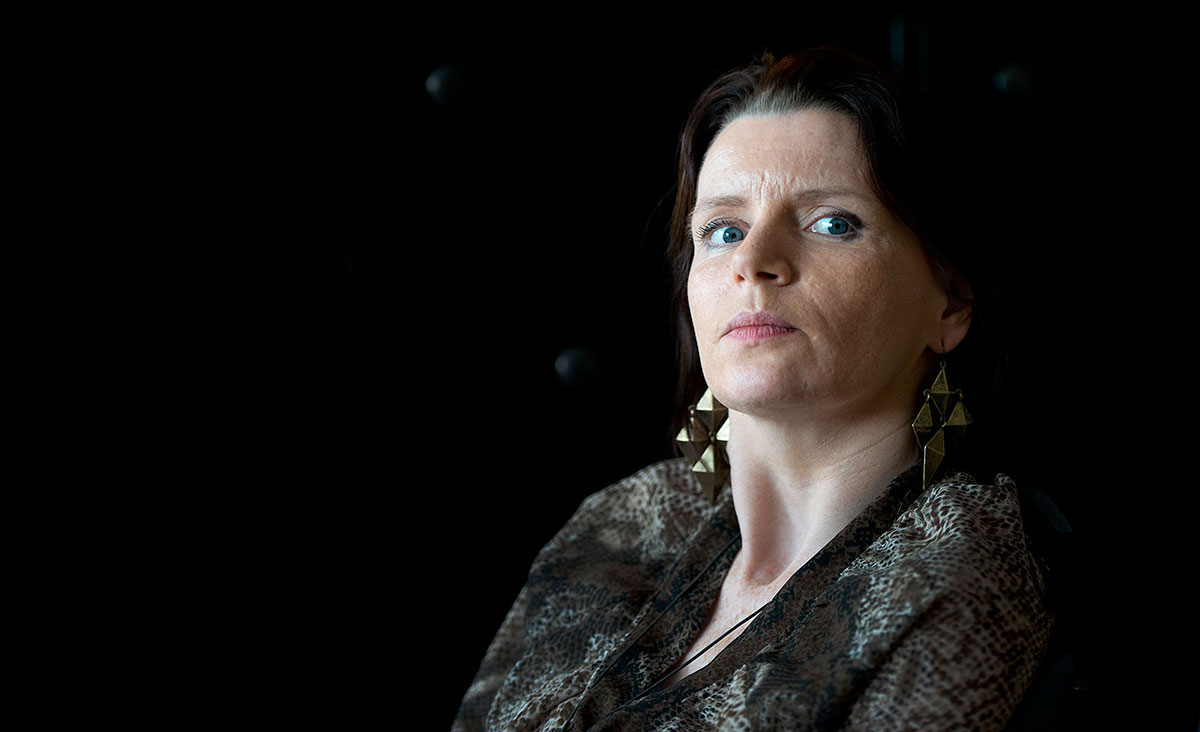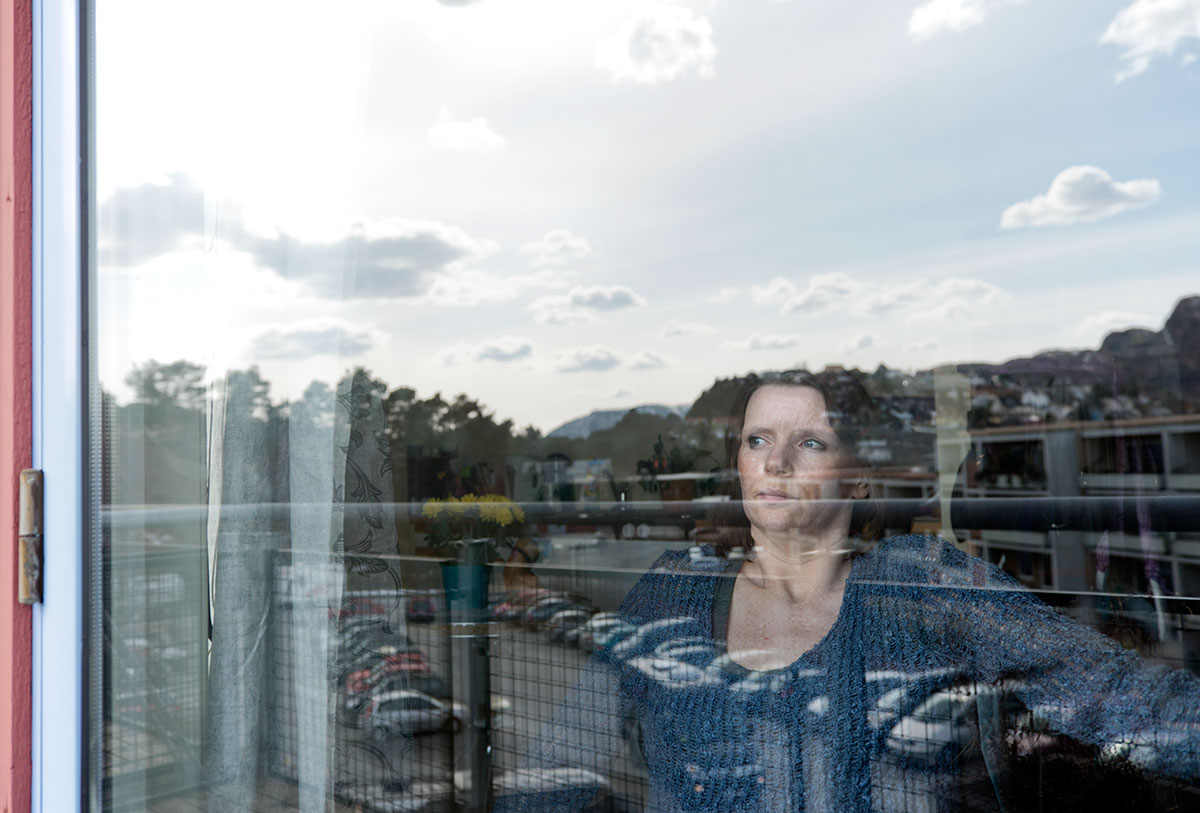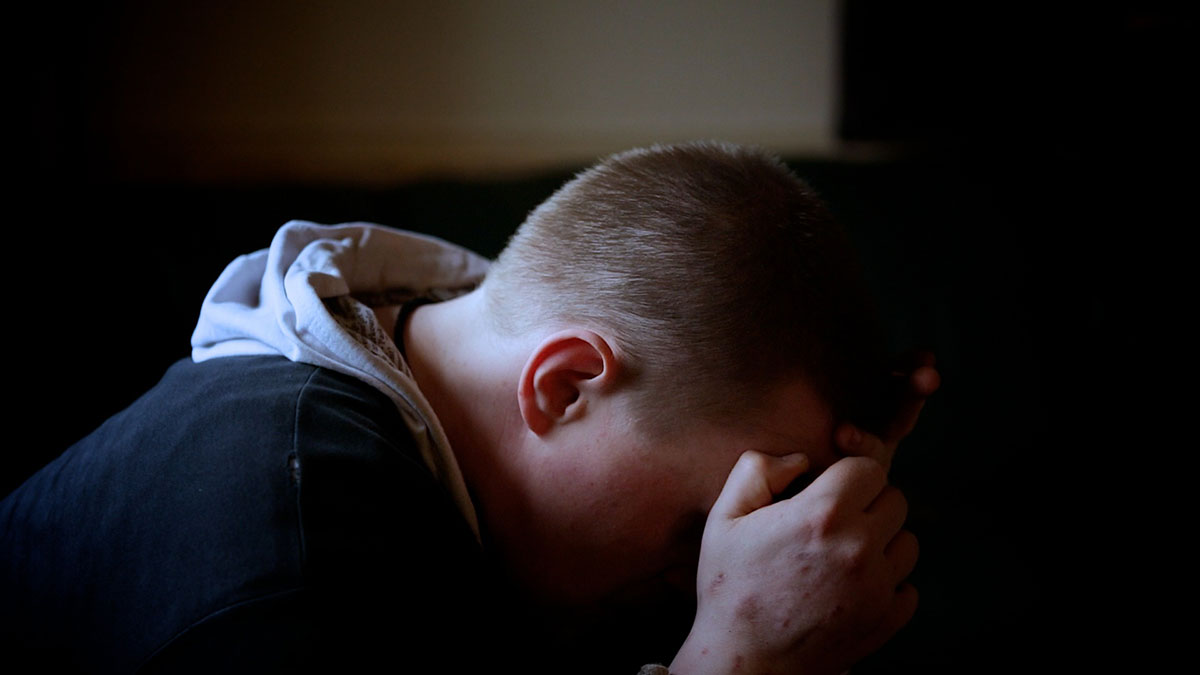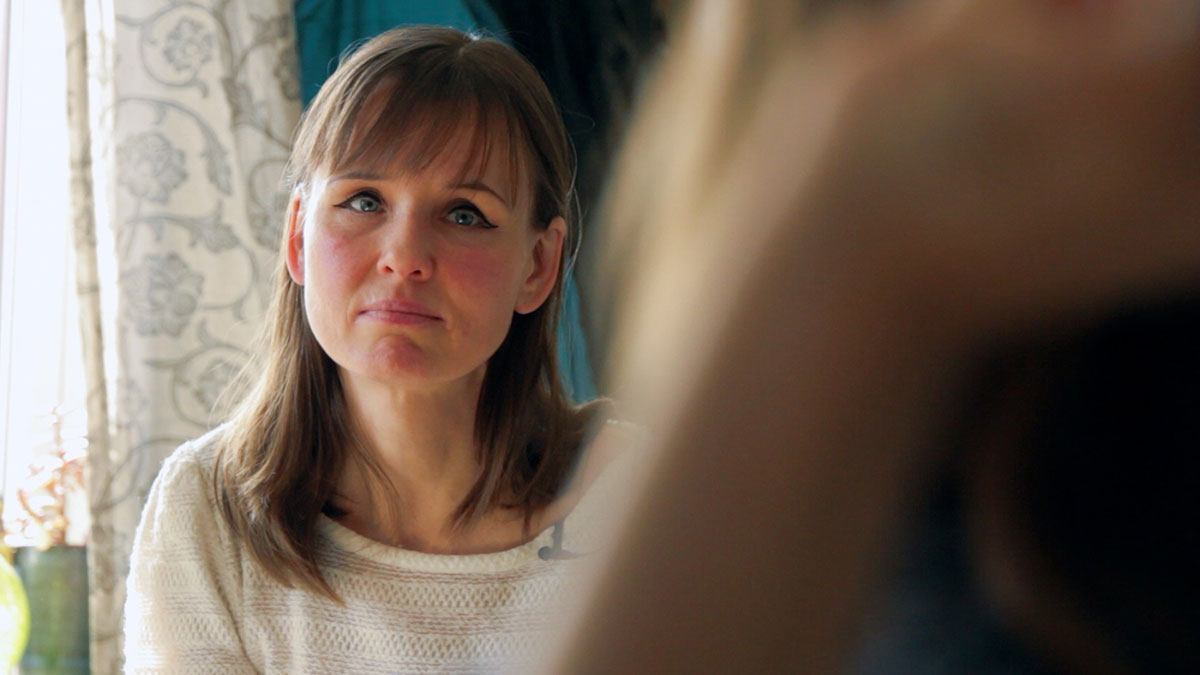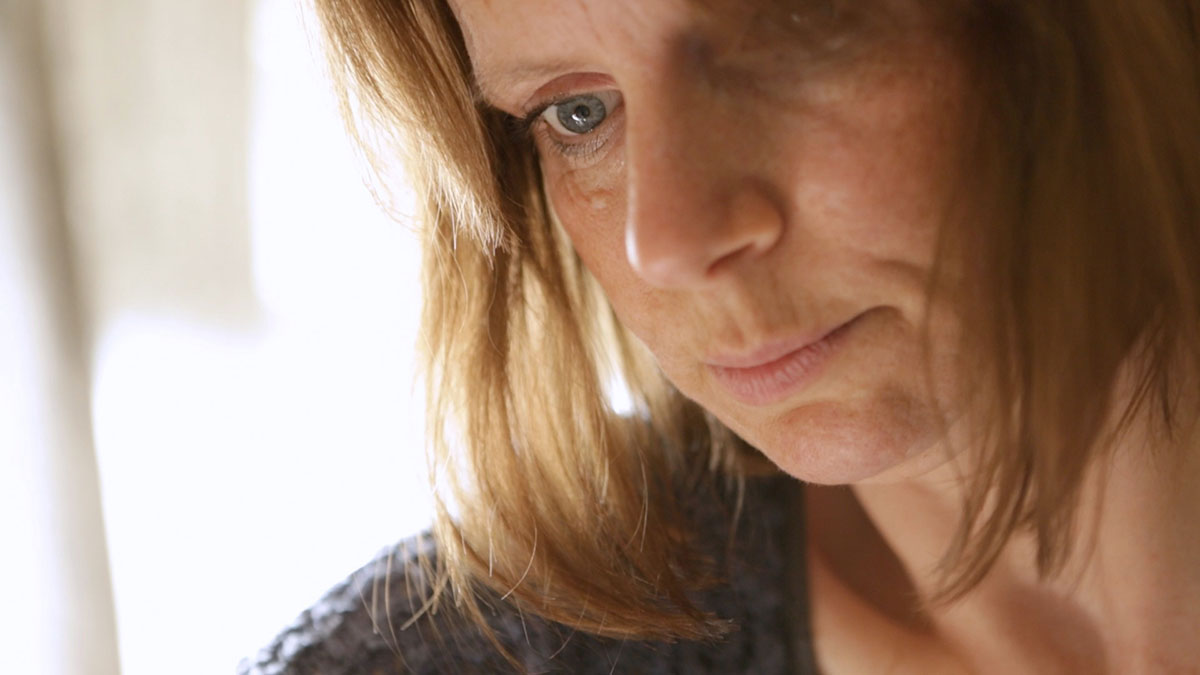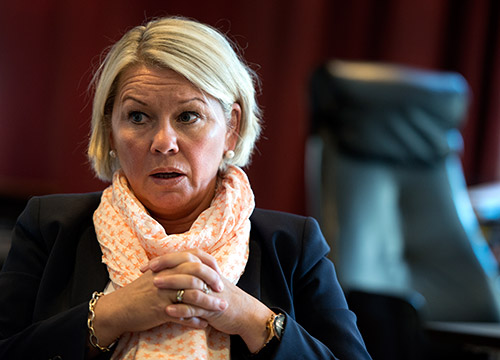They must have brought me to the wrong room, Kristin thinks. The woman in front of her is gaunt. Her hair is almost gone.
It's been three years since they last saw each other. But from the gaze it's clear that the person in the wheelchair recognizes her best friend.
Janne Mai Lothe Eliassen is unable to walk. She can barely talk. She only manages to produce a single word.
"Kristin," she whispers.
Then they both cry.
Both Janne Mai and her younger brother Ronny Lothe Eliassen were neglected at home whilst growing up. The children lacked food and clothes, and were often absent from school. Even though the child protection services were alerted about potential sexual abuse, the children remained living at home.
Yesterday Bergens Tidende told the brother’s and sister’s story. A thick pile of letters and reports document how a number of public officials knew about the circumstances. Over the years there were numerous warnings about a family in crisis. They were not vague concerns, but concrete reports about criminal offenses and neglect, and yet the children did not receive the help they needed.
Several people warned about how Janne was getting physically and mentally ill from her domestic situation in her teens. She developed anorexia and bulimia, and tried to take her own life. Still she was not removed from home. Instead she had to be a mother to her five years younger brother, and act as a nurse to her mother.
Throughout her twenties Janne became so ill that she stopped going outside. She lost all contact with the outside world. Her younger brother Ronny was suffering from a serious drug addiction, and would stop by only sporadically. For almost three years Janne lived in near total isolation with her mother in a council flat in Landås.
On 21 June 2000 she doesn't have any more to give. 27 years old, Janne Mai Lothe Eliassen collapses on the floor of their living room, in front of her mother and brother. Ronny goes along with her in the ambulance. He holds his sister's hand, and comforts her. He begs Janne to listen to the doctors. "If you don’t get help, you’re going to die", he says.
When Janne arrives at Haukeland University Hospital, she is conscious. She explains what has happened.
"27-year-old woman from a problematic family background, admitted due to likely third time fit of cramping. The patient says she has had bulimia for several years and vomits what she eats", the papers state.
The doctors write as follows about Janne: ”Woman with very complicated social background, on disability benefits due to mental problems, a lot of alcoholism in the family, but apparently not with her. Not much school.”
One day later, just before nine in the evening, a life changing event takes place. Janne is talking to a nurse when suddenly she freezes and falls unconscious. Her lips turn blue.
Shortly after, Ronny receives a phone call from the hospital. ”Cardiac arrest”, they say.
Ronny rushes to the hospital. His big sister, who has been his surrogate mother and best friend his entire life, is lying on the bed, unconscious. She is connected to a respirator; the mask covers her entire face. There are tubes everywhere. Janne is in a coma for several weeks.
"It’s the most fucked up thing that’s ever happened to me.
It hit me:
Now I’m all alone.
All I had left was getting high."
Ronny, 2013
When Janne wakes up again after several weeks in a coma, her doctors conclude:
"Extensive brain damage. She has paralysis and problems controlling movement", her journal reads. A speech therapist evaluates Janne’s ability to communicate.
"Cried, had no speech. She gave good eye contact, and was able to blink. She cried a lot when she received attention".
All her life Janne has cared for her younger brother and her ill mother. Now Janne is the one in need of round-the-clock care. She is placed in the Living Collective, a department for young disabled people at Midtbygda nursing home.
Over the next thirteen years, only two people will come to visit Janne on a regular basis.
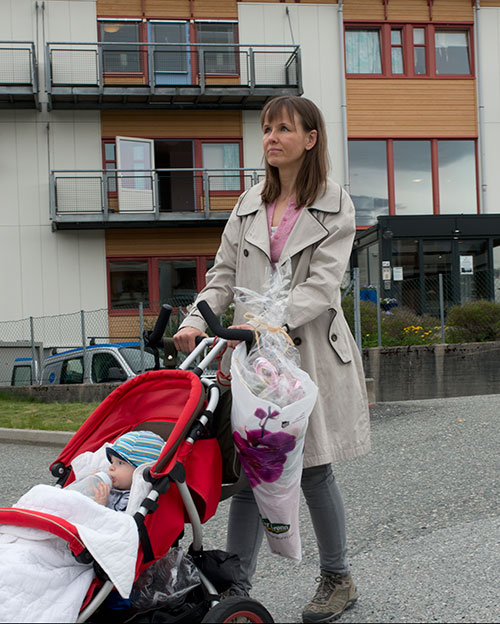
Kristin Tømmervaag, Janne’s best friend through her entire childhood, is staring at the screen of her mobile phone. There are twenty-eight lost calls from the same number. Kristin calls back. Right away she can tell that the person answering is drunk.
“Janne is so ill, she’s in a home.”
Janne’s mother slurs, but manages to get across that her daughter is in a nursing home in Åsane.
Kristin doesn’t understand anything. Why on earth is Janne there? She is only 27.
The mother also calls her cousin Dagmar Løndal. It has been years since they last spoke.
“Janne has been molested. By her step-father,” says Janne’s mother. Then she hangs up.
Kristin sorts through old photo albums, letters and postcards. She looks at the trips to the log cabin, the parties, the fits of laughter and the hair-dos. She enters all the material into her computer, and makes a 54-page presentation. ”Janne and I” is the title.
Then she shows it to her best friend. Underneath the pictures is information about who is in them, and what is happening. Janne’s brain damage makes her memory poor. Kristin wants to help Janne remember who she really is.
Every time Dagmar comes to visit, Janne makes the same sounds.
"– Rny."
"– Mo."
Dagmar understands what she is asking. She thinks it’s terrible. She doesn’t know what to reply. Ronny and the mother never show up to the nursing home where Janne lives. Nobody knows how they are doing, either.
Dagmar shows up for birthday celebrations, takes Janne home with her for Christmas and out for trips. Until today she is the only relative to be there for Janne.
At Midtbygda Janne’s step-father shows up occasionally. Kristin says she tells the staff that he has abused Janne since she was little. According to Kristin the stepfather is allowed in to Janne’s room, but he's not allowed to be alone with her. Then he stops coming altogether.
The schedule for Janne’s new life is hanging on the door:
Social gathering in the kitchen with newspaper reading. TV-night. Evening fun time in the kitchen.
A few times a month she is taken out of the institution to paint pictures or go to the cinema. When she is in her room, she listens to music. Even if it requires concentration to hold the pencil and control the lines, she still enjoys drawing.
When she's alone, her thoughts churn.
She has worried about her little brother ever since he was born. She still does, but she doesn’t know where he is.
Ronny, who is in his mid-twenties, has long since become a part of the established drug scene in Bergen. Heroin stops the nightmares about the father. Since Ronny was seventeen, he has alternated between living on the streets and with his mother in Slettebakksveien. He says the first time he had a bed was the first time he stayed at a hostel.
Janne’s and Ronny’s mother is in need of constant care. It's been years since Janne cared for her. The mother still isolates herself in the flat, and her only contact with the outside world is her drug-dependent son.
After Ronny has shot up, he brings out his philosophy books. He says hello to his old friends Sartre, Descartes and Nietzsche.
He then thinks about Janne, his kind older sister who used to get him books from the library when he was little.
He thinks about how he should go and see her, but he's unable to. He remembers seeing Janne connected to all those tubes. Ronny has social anxiety, and is afraid of going to a nursing home full of people he has to deal with.
"My sister gave me interests.
It saved me.
The thirst for knowledge gave me a reason to live."
Ronny, 2013
"She was molested whilst growing up. Amongst other things, she is supposed to have been beaten and abused by her mother. In the conversation Janne Mai was asked how she feels about her current situation. She expressed that life is "bad", which indicates that she has insight into her own situation".
The words are from an expert evaluation of Janne by psychologist Kolbjørn Romsdal in May 2001. A year has passed since her collapse, and weekly training with a speech therapist has yielded few results. Instead she is referred to training in computer-assisted communication.
”If she could use computer aids to help with communication, it would improve her ability to communicate and her quality of life considerably”, the psychologist writes.
The doctors at Haukeland University Hospital are not sure how well Janne will be able to talk and move in the future. Some say the potential for rehabilitation is great, others think it is limited.
Janne used to write long letters to her best friend. They'd gossip for hours. She'd draw pop stars and animals. Now Janne mostly communicates using single syllable words. She tires quickly, and undergoes training so she'll be able to hold a pencil. Line by line, dot by dot. Janne doesn’t give up.
Eventually she is able to write her own name.
A teacher with the adult education services makes a report about Janne when she applies for computer aids:
”When you get to know her a little it is possible to understand most of what she says. The applicant understands everything that is said to her. The applicant is a very positive woman who doesn’t give up easily.”
After a few years Janne is able to get out of her chair. She takes a few, staggering paces with help from the staff. She likes using her hands. Janne has always liked keeping herself busy.
”Morning care: Partly cares for herself, with a lot of facilitation. Meals: Made coffee, set the table, got things from the cupboards. (…) Has a lot of initiative and expresses that she enjoys doing the activities”, writes a physical therapist in May 2003.
The summer of 2008 Kristin Tømmervaag becomes Kristin Whitehouse. It takes a bit of convincing, but Kristin gets her way: She wants to get married with her best friend present.
To make the journey possible, two staff from Midtbygda travel with Janne to Sussex in south-east Britain. Janne’s dress is blue with a flower print. She swings about on the dance floor in her wheelchair. Janne is smiling in all of the pictures.
Kristin and Dagmar see signs of the good old Janne in there. She laughs and gesticulates, formulating more and more words. When visiting Janne, they often talk about old times, about Ronny and the mother, about the breathing rooms. The trips to the log cabin. When the step-father read stories to Janne. When the mother gave the children a bag of empty beer bottles so they could recycle them and buy sweets with the bottle deposits.
At home in Slettebakksveien Janne’s and Ronny’s mother is more than 70 years old. She has been physically and mentally ill for most of her life. She gets prescriptions from her doctors. She has made a deal with Ronny to share the pills with him if he goes to collect at the pharmacy.
When the pills and the bottles of alcohol have run out, the mother tells stories and shows photos from the olden days. The son catches a glimpse of a completely different life. Back in 1959 she wants to experience more than Bergen has to offer. She moves to Britain and trains to become a nurse.
The mother’s first husband Andrew Liddle says that the woman he fell for was beautiful and vivacious. They met at a club outside Newcastle, and married shortly after. She got a job at Hexham Hospital, he owned a car garage. Together they had three daughters.
It wasn’t long before Andrew started finding bottles of alcohol hidden around the house. The second eldest daughter remembers how the mother tried to put the girls to bed earlier and earlier. One time she wanted the children in bed by four in the afternoon.
Andrew, Janne, Ronny and other family members all explain that the mother’s difficult upbringing caused her to drink. The ex-husband saw that the three daughters were being hurt by the mother’s drinking, and she moved out. She couldn't handle the job as a nurse any longer. When she moved back to Bergen in 1971, she was broke and unemployed. The three daughters stayed on with their father in Britain. They had a safe upbringing.
Back in Slettebakksveien the mother is no longer able to stand up. Ronny tries to get help several times.
"An ambulance is supposed to have been with them several times over the course of the last month, but the patient refused admittance, verbally and physically", Haukeland writes in 2010 after a conversation with Ronny. He says he goes to social services, explains he is an addict, that he is having to chang diapers on his elderly and care-dependent mother, and that he is no longer able to cope.
"I begged them. Can’t you put her in a home?
Force her to be admitted?
She is about to die."
Ronny, 2013
In August 2009 an anonymous person calls the A&E in Bergen and notifies that the mother is significantly weakened and that she is being abused by her son, according to a note by the A&E.
According to the referral notice she was to be picked up by an ambulance, but according to Haukeland University Hospital she was never taken to the hospital. Ronny says that an ambulance did come to the flat several times, but the mother refused to be admitted.
She stays on in the council flat.
The mother is incapable of taking care of herself. Because the rent hasn't been paid for six months, the council decides to take action. The result is that enforcement officers will evict Ronny and the mother from the council flat in Landås.
On the morning of 11 February 2010, the enforcement officer and police let themselves into the flat. What meets them is an elderly woman who ”has been lying in her own urine and feces for weeks/months”, according to the order of admittance at the A&E at Haukeland University Hospital. The woman is alone. She has not stood up for more than a year and she has large, open sores.
”She has been subjected to a serious lack of care by her son”, the journal reads.
Ronny rejects having abused his mother, but doesn't attempt to hide the fact that he was incapable of caring for her – something he says he informed them about.
Just two weeks later the mother dies at Haukeland University Hospital from malnutrition and bed sores. When Janne’s and Ronny’s mother passes away, 76 years old, she is alone.
Nobody comes to look for the dead woman. Janne and Ronny receive the message about the mother after a couple of days. Ronny doesn't show up at the funeral. He is too worn out.
Since no other relatives come forward, Midtbygda takes over organizing the ceremony out of consideration for Janne. A month after her heart stops beating, the mother is put to rest in the chapel at Midtbygda nursing home. The only relative present is Janne. A few of the staff come along as a show of support. Funeral director Johannes Blom at Åsane Funeral Agency is used to seeing people in mourning. Yet the ceremony makes a lasting impression. He thinks it's sad to see Janne say her final goodbyes from the wheelchair.
As Janne goes to place a rose on her mother’s coffin, she has to be assisted. Her hands don’t work anymore. The urn is buried in the anonymous section of Møllendal burial grounds.
After the mother’s passing, Kristin and Dagmar notice that Janne starts getting skinnier. She doesn't as frequently anymore. She turns her wheelchair around with her legs, and pulls herself towards her bed by her toes. Then she points to the small, gilded picture frame on her night stand. It’s a faded picture of a young woman in a dotted blouse with a silver pendant around her neck.
“Sad,” says Janne and looks at Kristin.
“She was your mother.”
Kristin has visited Janne over the thirteen years she has lived at Midtbygda nursing home. She still keeps showing up.
The first few years Janne lived in the institution, she was unable to speak much. She talks better now. Words have become conversations.
Kristin is the only person who is always there. The only one never to give up.
"What does Kristin mean to you?"
(Pause)
"EVERYTHING."
Janne, 2013
For Ronny, it will still be a few years of hostels, living in stairwells and in back alley before he gets a place in a treatment centre at Blå Kors in Askøy.
He says it was due to his sister and the philosophers that he could even face starting rehabilitation.
His curiosity for life gives him something to live for. Today Ronny is being treated with methadone, and is closely monitored by qualified personnel at a training centre for life skills.
Some days are heavy. He spends those as he has done since he was little. He shuts himself in his room and cries. Other days are better.
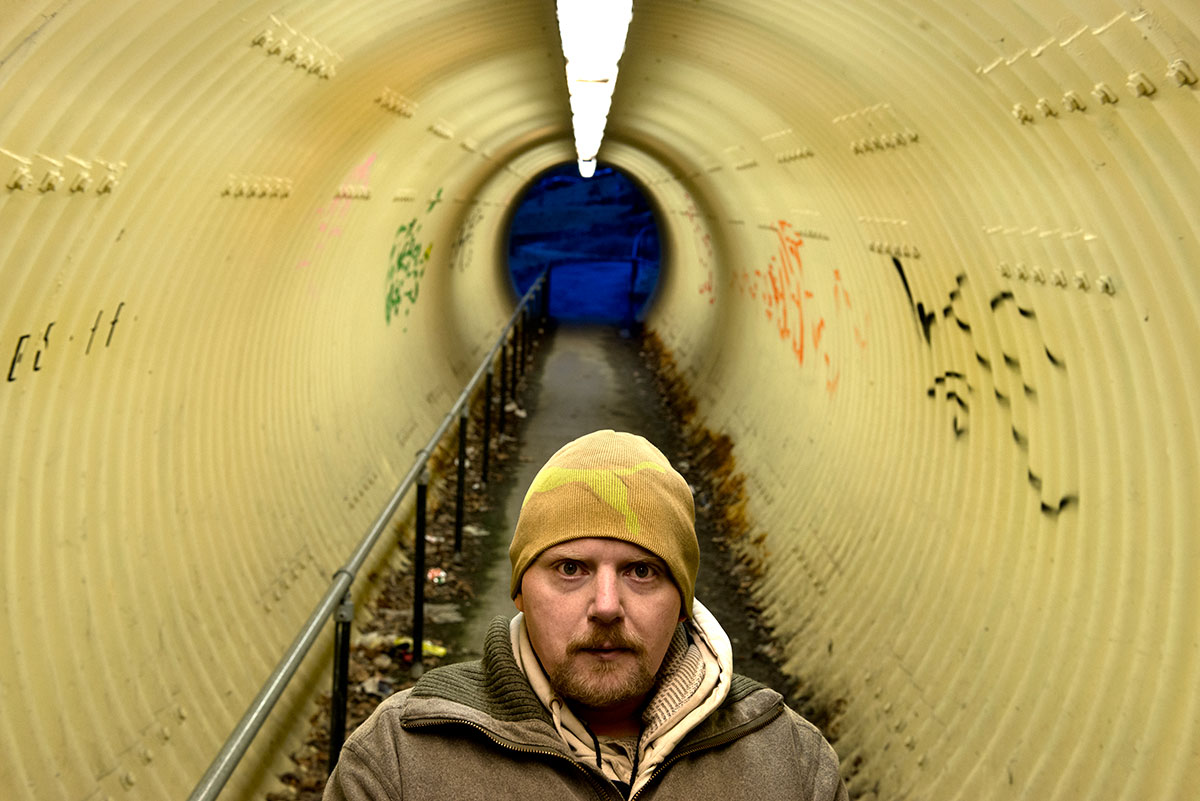
It's only now he's able to talk about what he's been through. He says he is doing it for Janne. He is doing it to get answers about why their childhood was "pure hell".
How could so many people know how bad things were, without improving the situation for the children?
It's been thirteen years since he last saw Janne. He doesn't know when he'll be strong enough to visit her again. But when he's ready, Janne will be sitting in her wheelchair, waiting for him.
She has just had a legal guardian appointed to her. A few weeks ago Janne pressed charges against her step-father for the years of abuse. The police have questioned her and the case is now under investigation.
Janne is forty years old. She wants to be heard.
"What do you think about the future, Janne?"
"See Ronny. Always my boy."
"What do you wish for?"
"Harley."
"You want to go on a Harley?"
"Yes!"
"Why?"
"Feel freedom."
Janne, Midtbygda nursing home, May 2013.
Janne’s story part 1 and 2 were approved in their entirety by Janne Mai Lothe Eliassen, Ronny Arne Lothe Eliassen, Dagmar Løndal (Janne Mai Lothe Eliassen’s closest relative), and Kristin Whitehouse (Janne Mai Lothe Eliassens friend since 1981).
SOURCES: The story is based on interviews with Janne Mai Lothe Eliassen, Ronny Arne Lothe Eliassen, Kristin Whitehouse (Janne’s friend), Janne’s stepfather who is also Ronny’s father, Dagmar Løndal (Janne’s closest relative, cousin of her late mother), former children’s nurse Bente Liland, former chief of police in Laksevåg, Harald Andersen, Øyvind Christiansen (who has written a dissertation on the role of the child protection services), senior consultant Carmen Escobar Kvitting at BUP, Dag Skilbred (child protection consultant in Laksevåg from 1982 to 1987), former headmaster Sigrun Eckhoff at Adventkirken skole, Andrew Liddle (Janne’s and Ronny’s mother’s ex-husband), Ena Liddle (Andrew Liddle’s current wife, former nanny to Janne’s and Ronny’s step-siblings), Turid Liddle (Janne’s and Ronny’s step-sister), Evy Sæthre (Janne’s friend), Christel Dahle (Janne’s friend), several family members, former neighbours at Vadmyra, Rolf Nilsen and Jan Sivertsen (building caretakers at Vadmyra), Janne’s medical records, Janne’s mother’s medical records, Janne’s school records from Adventkirken skole, Janne’s and Ronny’s records from the city archives (including documents from schools, child protection services, social services), information from the National Registry, 11 years of correspondence between Janne and Kristin, Kristin Whitehouse’s diaries.
Text: Ingunn Røren, Ingrid Fredriksen.
Research: Anne E. Hovden.
Photo: Rune Sævig.
Video: Ronald Hole.
Design and programming: Thomas Orten.
